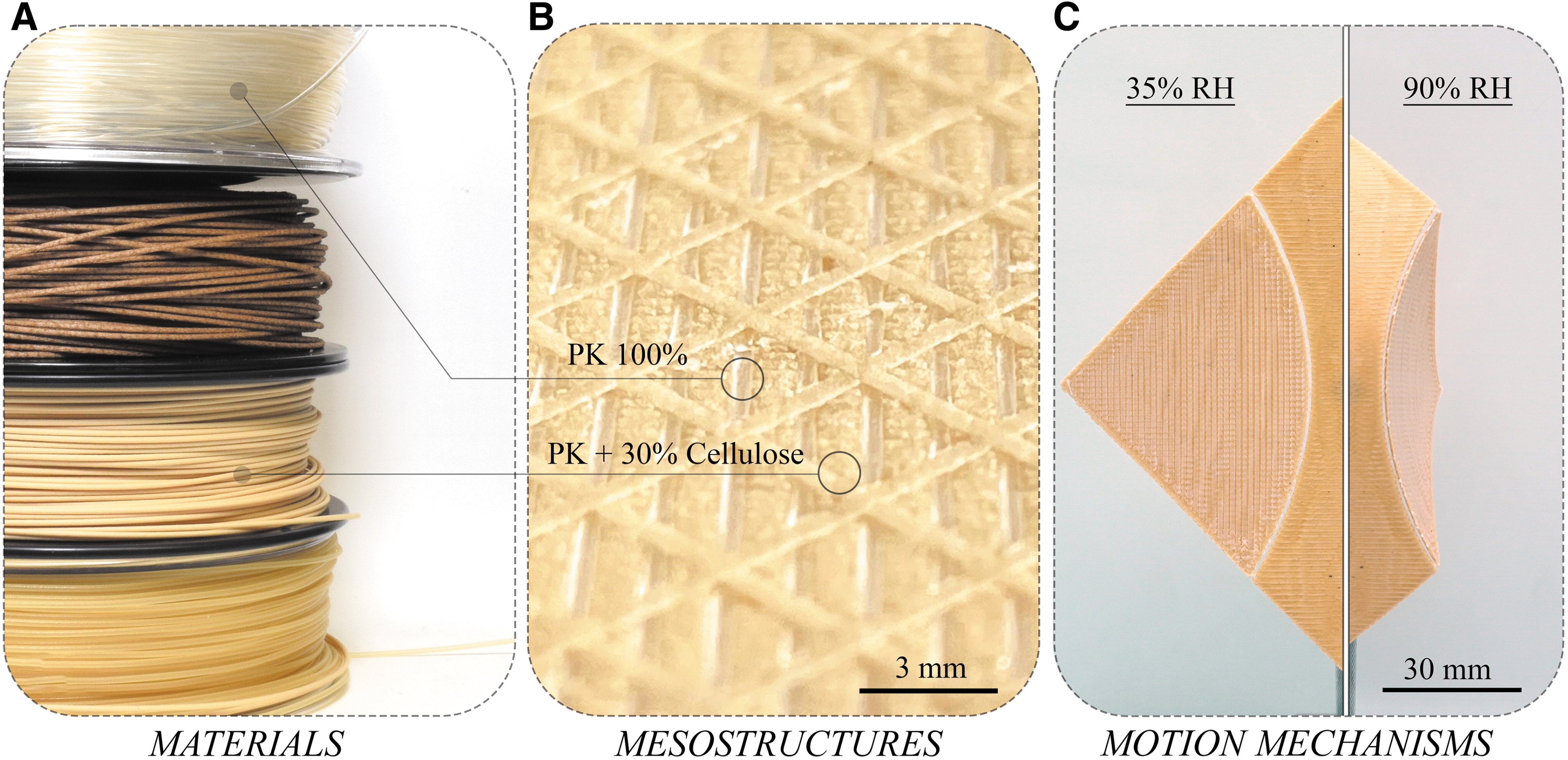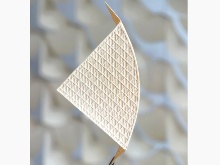A new paper on Codesign of Biobased Cellulose-Filled Filaments and Mesostructures for 4D Printing Humidity Responsive Smart Structures was published in the 3D Printing and Additive Manufacturing Journal.
This paper presents a codesign method for the 4D printing of hygromorphic structures, incorporating parallel development of (1) biobased cellulose-filled filaments with varying stiffness and hygro-responsiveness, and (2) designed mesoscale structuring in printed elements. Through this method, a series of prototypes that are tuned to change shape (i.e. open and close) in response to relative humidity (RH) is produced. The prototypes can fully transform in conditions of 35-90% RH, which corresponds to naturally occurring shifts in RH in daily and seasonal weather cycles. Furthermore, their motion is fast (within the range of minutes), fully reversible, and repeatable in numerous cycles. These results open new opportunities for the utilisation of 4D printing and natural resources for the development of functional humidity-responsive smart structures.

FIG. 1. Codesign for 4D printing. (A) Development of a palette of custom hygroscopic printing filaments composed of biobased matrix polymers and cellulose powder. (B) Detailed view of the 3D-printed, multimaterial mesostructures with designed anisotropy and porosity. (C) Humidity-responsive smart structure based on curved folding mechanism with actuated surfaces and flexible hinges in near-flat configuration equalized in 35% RH (left), and folded configuration in 90% RH (right; in 20°C). 3D, three dimensional; 4D, four dimensional; RH, relative humidity.
Abstract
Hygromorphic smart structures are advantageous as passively actuated systems for generating movement, with applications ranging from weather-responsive architectural building skins to adaptive wearables and microrobotics. Four-dimensional (4D) printing is a valuable method for multiscale fabrication and physical programming of such structures. However, material limitations in terms of printability, responsiveness, and mechanical properties are major bottlenecks in achieving reliable and repeatable humidity-responsive actuation. We propose a codesign method for 4D printing hygromorphic structures through fused filament fabrication, incorporating parallel development of (1) biobased cellulose-filled filaments with varying stiffness and hygroresponsiveness, and (2) designed mesoscale structuring in printed elements. We first describe the design of a pallet of filaments produced by compounding cellulose powder in mass ratios of 0–30% within two matrix polymers with high and low stiffness. We then present the design, fabrication, and testing of a series of 4D-printed prototypes tuned to change shape, that is, open and close, in response to relative humidity (RH). The structures can fully transform in conditions of 35–90% RH, which corresponds to naturally occurring shifts in RH in daily and seasonal weather cycles. Furthermore, their motion is fast (within the range of minutes), fully reversible, and repeatable in numerous cycles. These results open new opportunities for the utilization of 4D printing and natural resources for the development of functional humidity-responsive smart structures.
More information on the paper here.


